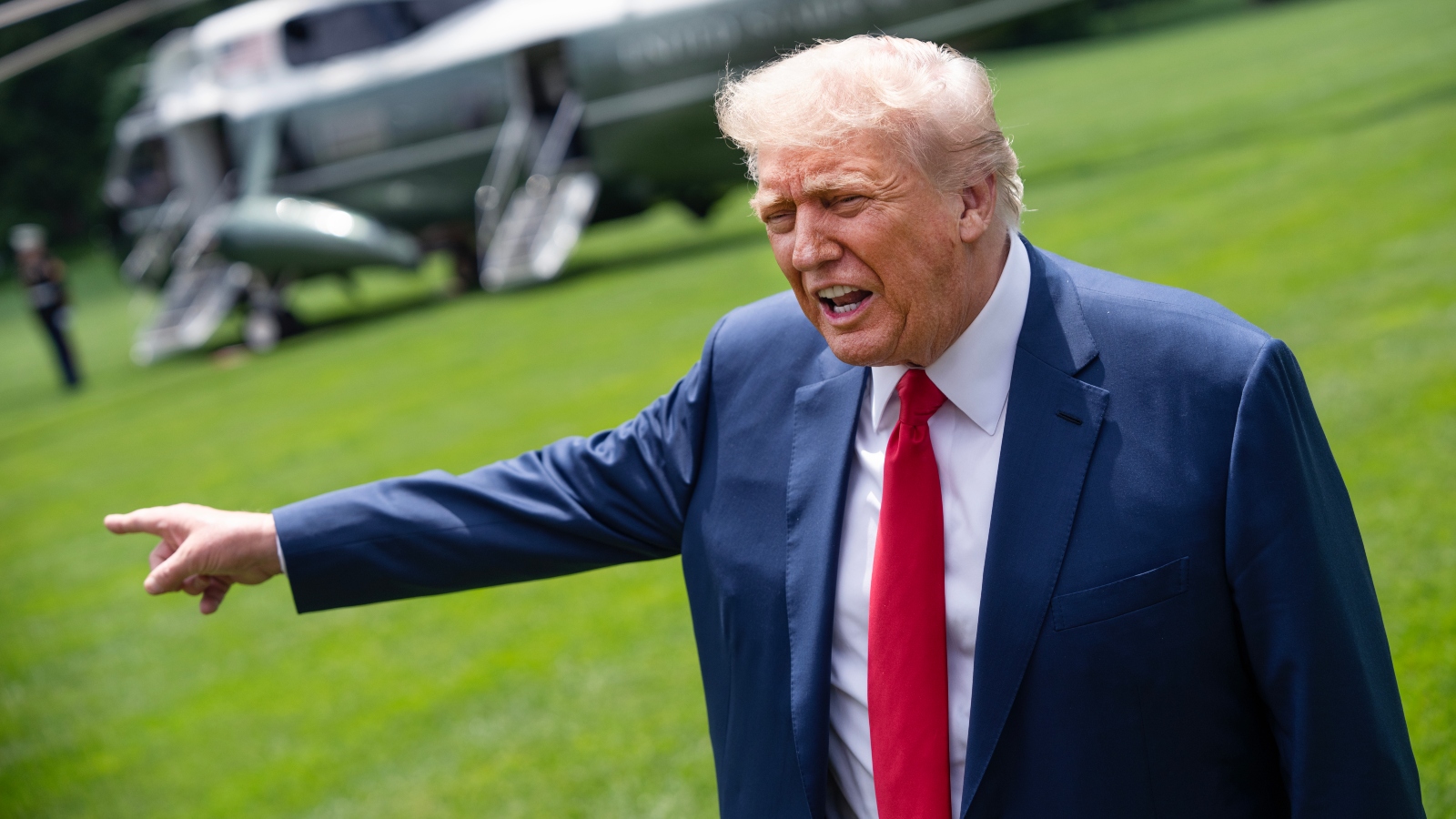In the wake of the U.S. strikes on Iran’s most sensitive nuclear sites, a wave of public reaction has followed—from political leaders, military analysts, and allied nations. Among the strong endorsements was a notable statement made by Vice President JD Vance, who praised President Trump’s national security apparatus for expertly executing “Operation Midnight Hammer.” Here’s a comprehensive breakdown of Vance’s response, what it implies, and how the broader political landscape is evolving as a result.
1. Vance Commends National Security Coordination
On Sunday, Vice President Vance took to X to highlight the professionalism of U.S. military personnel and national security figures involved in Saturday night’s mission. youtube.com+4apnews.com+4timesofindia.indiatimes.com+4
“The operation last night is an incredible testament to American pilots and other service members, from General Caine and General Kurilla on down,” Vance wrote.
He acknowledged that much of the administration’s security team has been under heavy media scrutiny in recent weeks:
“While the media has attacked the president’s senior team relentlessly…and tried to sow fake division, last night would have been impossible without perfect coordination and discretion from the president’s national security team.”
Saying he was deeply proud, Vance added that Trump shares that pride.
2. Defining the Strike as Precision, Not Escalation
During the Pentagon’s Sunday briefing, Defense Secretary Hegseth and Gen. Dan Caine emphasized that the operation struck only nuclear infrastructure, not Iranian troops or civilians. apnews.com+10pbs.org+10politico.com+10pbs.org+4apnews.com+4apnews.com+4
Vance echoed this distinction on NBC’s Meet the Press, reiterating that the U.S. was targeting Iran’s nuclear program—not the country itself—and that avoiding a wider war was the administration’s clear priority. politico.com
He framed the strikes as a strategic reset, saying:
“This is exactly the kind of move that can force Iran back to the negotiating table.” yahoo.com+7politico.com+7timesofindia.indiatimes.com+7en.wikipedia.org+5apnews.com+5apnews.com+5
3. Official Details Behind the Strike
The operation, codenamed “Midnight Hammer,” brought together multiple combat and support systems:
-
B-2 stealth bombers crossing the globe with mid-air refueling and stealth deception, involving both Western and Eastern Pacific flight paths. en.wikipedia.org+4en.wikipedia.org+4timesofindia.indiatimes.com+4
-
14 GBU-57 “bunker-buster” bombs striking highly fortified underground sections at Fordow and Natanz—part of Iran’s uranium enrichment network. apnews.com+5apnews.com+5en.wikipedia.org+5
-
Submarine-launched Tomahawk missiles hitting Isfahan infrastructure. politico.com+3apnews.com+3en.wikipedia.org+3
-
A total of over 125 U.S. military aircraft, plus supporting intelligence and refueling operations. newsweek.com+15apnews.com+15reuters.com+15
Vance praised the planning and flawless execution that enabled this broad, multi-layered strike, underscoring the administration’s control over every phase of the mission—from design through delivery.
4. Rubio Reinforces That This Is Not War
Secretary of State Marco Rubio, also speaking Sunday, emphasized that the U.S. action is not a war declaration, but a targeted move to dismantle Iran’s nuclear threat. timesofindia.indiatimes.comwsj.com+8dw.com+8politico.com+8
On Sunday Morning Futures, Rubio stated:
“That was an Iranian choice… If they retaliate, it will be the worst mistake they ever made.” newsday.com+11dw.com+11nypost.com+11
He downplayed regime change as an objective, focusing instead on nuclear de-escalation. He also issued stark warnings regarding attempts to disrupt the Strait of Hormuz.
5. Coordinated Messaging: Force and Diplomacy
In tandem with the strike, U.S. officials reiterated readiness for diplomatic engagement:
-
Vance framed the operation as aimed at resetting talks.
-
Rubio encouraged direct negotiations, not via intermediaries.
-
Defense Secretary Hegseth emphasized that peace through strength remains the guiding philosophy. apnews.comkulr8.com+3apnews.com+3pbs.org+3
Their statements reflect a dual-track message: military precision backed by diplomatic resolve.
6. Political and Constitutional Ramifications
The strike has sparked renewed debate in Congress:
-
John Ratcliffe, the CIA Director, is expected to deliver an intelligence update to the Senate on Tuesday.
-
Some lawmakers—including Reps. Khanna and Massie, and Sen. Kaine—have proposed legislation to limit executive war-making powers.
-
Critics argue that even targeted operations require Congressional authorization under Article I.
While some Republicans support the strike, others fear getting dragged into another foreign conflict—especially without a broader endgame.
7. Risks of Retaliation Remain Elevated
Military experts caution that Iran’s response could take many forms:
-
Proxy militias in Iraq, Syria, or Yemen launching strikes against U.S. bases
-
Cyberattacks targeting U.S. infrastructure
-
Maritime threats in the Strait of Hormuz
-
Possible closure of Hormuz, with global implications for oil markets theguardian.com+2reuters.com+2nypost.com+2
While the U.S. displayed overwhelming precision, strategic analysts warn of the volatile path ahead.
8. Global and Regional Responses
International reaction was mixed:
-
European allies (UK, France, Germany) called for restraint and diplomacy. newsweek.com+15apnews.com+15apnews.com+15cbsnews.com+15apnews.com+15theguardian.com+15
-
Iraq and Egypt expressed concern about escalation. apnews.com+1en.wikipedia.org+1
-
The UN and IAEA urged maximum caution and emphasized nuclear safety. theguardian.com
-
Russia, China, Turkey joined calls to resume talks and prevent wider war. apnews.com+1politico.com+1
Domestically, oil prices rose, airlines rerouted flights, and military attachments to maritime trade routes increased.
9. Vance’s Political Calculus
For JD Vance, backing the strikes affirms his credentials as a national security hawk aligned closely with Trump’s inner circle. Previously skeptical of military intervention in Iran, he labeled the strike a strategic pivot. politico.com
His public praise signals confidence in Trump’s leadership and faith in the administration—possibly positioning Vance as a key voice for strong U.S. defense policy going forward.
10. What Lies Ahead?
Key questions now include:
-
Will Iran launch significant retaliation, and how will the U.S. respond?
-
Will Congress assert more control over war powers in response?
-
Can back-channel diplomacy resume while military posturing continues?
The next days will be critical in determining whether this strike proved a deterrent—or opened a Pandora’s box of escalation.
Bottom Line
Vice President Vance’s public commendation of Trump’s national security team—and the strategic precision of the Iran strike—adds weight to a narrative emphasizing U.S. capability, coordination, and resolve. Alongside Rubio’s diplomatic overtures, it reveals a unified administration message: force when necessary, but always with a penline toward peace.
As world leaders and Capitol Hill continue scrutinizing the operation, one thing is clear: Operation Midnight Hammer has created a turning point—politically, militarily, and diplomatically—that will shape America’s role in a turbulent Middle East.

